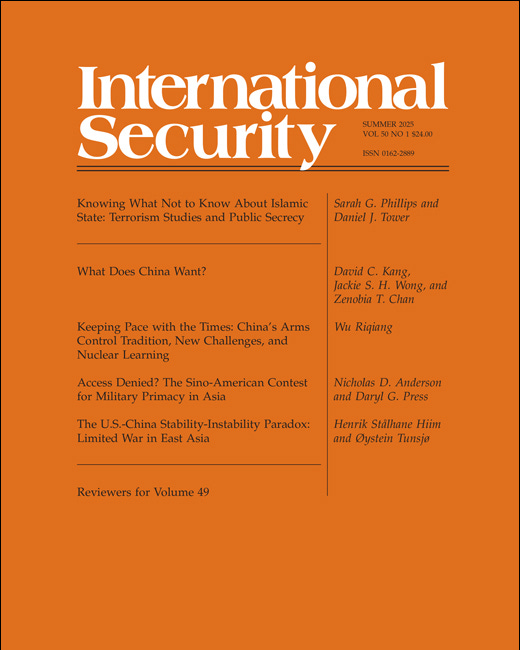U.S. podcasters thrive, and the Chinese are just getting started
Crossroads for Luo Yonghao - and maybe other podcasters as well?
In mid-August, Luo Yonghao—China’s entrepreneur-turned-internet celebrity—launched a long-form video podcast, Luo Yonghao’s Crossroads, across Chinese platforms featuring in-depth conversations; his first guest was Li Xiang, founder of emerging EV brand Li Auto. Stretching up to five hours, the format immediately surged in popularity, hitting over two million views on a single platform almost instantly — evidence that heavyweight Chinese creators are beginning to mimic Lex Fridman and Dwarkesh Patel.
Almost simultaneously, Edward White at Financial Times reported that China's podcast audience may reach ~150 million in 2025, rising from fewer than a million just five years earlier—a surge led by creators navigating both growing curiosity and regulatory boundaries.
Even with celebrities launching podcasts and listenership booming, Chinese independent podcasters are still struggling. The reason lies in structural differences between the ecosystems: in the U.S., creators own their audiences and monetize trust; in China, creator autonomy is limited by platform control, transactional monetization, and constrained attention environments—exacerbated, though subtly, by censorship.
In the United States, podcasting was architected on RSS—an open, decentralized feed that lets a creator distribute audio broadly. Once published, the creator owns the relationship. If they switch platforms, listeners follow. Apple, Spotify, and others serve as discovery tools, not gatekeepers. Creators monetize sustainably through Patreon, subscriptions, sponsorships, host-read ads, live events, merchandise, and donations—no platform approval needed. Even as video podcasts exploded, the open distribution model held firm: U.S. listeners increasingly consume podcasts on YouTube, illustrating that video adds new reach without closing off distribution.
This open system underlies monetization rooted in trust, which is notably resilient. Nielsen finds that host-read ads—embedded naturally into episodes—generate far higher brand recall and conversion than produced ads, because they leverage the listener’s trust in the host’s voice. U.S. podcast ad revenue reached $1.9 billion in 2023 and was projected to top $2 billion in 2024, with creators earning directly via relationships and communities—not just transactional content sales.
Beyond infrastructure, cultural and lifestyle factors amplify the U.S. podcast advantage. Many Americans live in suburbs, drive their own cars to work—and often spend 30–60 minutes commuting in private spaces. Even post-pandemic, 68.7% of U.S. workers commuted alone by car in 2022. That creates long stretches where eyes are occupied but ears are free—perfect for 60–90-minute in-depth podcasts. Moreover, many U.S. homes feature private offices or quiet corners, and larger personal spaces support extended listening in more comfortable settings.
Turning to China, creators operate within platform-dominated, curated ecosystems. Platforms like 喜马拉雅 Ximalaya, 荔枝 Lizhi, 蜻蜓 Qingting, and 小宇宙 Xiaoyuzhou curate, recommend, monetize, and even moderate content centrally. Creators upload, but discovery, visibility, and audience connection remain platform-bound. Unlike in the U.S., a creator cannot easily port their listeners elsewhere if platform algorithms change. Platforms push algorithm-friendly formats—knowledge-for-pay courses, audiobooks, emotional talk shows—crowding out niche, audio-first podcasts that rely on slow-building listener loyalty.
Take Ximalaya: in 2023, it posted RMB 6.16 billion in revenue and RMB 224 million in net profit, demonstrating scalability—but mostly for the platform’s business. Tencent Music’s acquisition of Ximalaya for billions further consolidates control of monetizable audio content.
Podcast monetization in China remains largely transactional. Users buy content, not community. Once that payment is made, the relationship ends. When cheaper or quicker information appears on Douyin, Bilibili, or short video platforms, engagement drops sharply. Host-read ad models struggle to take hold because brands—facing unclear brand-safety norms—prefer standardized, produced ads, and creators lack control over messaging and placement. Consequently, few independent audio-first creators can sustain full-time careers; many rely on cross-platform income—from WeChat groups to consulting and live commerce—to survive.
Attention environments further constrain podcasts in China. In 2024, Chinese cities logged 32.24 billion urban rail trips. Subways are crowded, noisy, and attention-fragmented—poor conditions for immersive listening. Instead, quick, highly stimulating media wins. Short video platforms like Douyin, the Chinese elder sister of TikTok, and Kuaishou thrive on micro-engagements.
Adding to this, China’s short-video platforms have achieved a level of maturity and cultural penetration that makes them structurally advantaged competitors. Douyin and Kuaishou, and to a lesser extent, Bilibili, dominate not only user time but also content formats, recommendation algorithms, and monetization infrastructure. Their algorithms are highly personalized and optimized to deliver dopamine-triggering experiences within seconds, making them deeply embedded in daily routines—from morning subway rides to bedtime scrolling. For many Chinese users, opening Douyin or Kuaishou has become a default behavior, cultivated by years of habitual reinforcement and network effects. In such an environment, even as podcast listenership grows, creators face steep challenges competing for time and mental space against highly engineered short-video ecosystems that have already “won” the attention economy.
Yet, despite these obstacles, China's podcast listenership is growing—from fewer than a million to a projected 150 million by 2025—though still not matching short-video scale.
An additional subtle factor is censorship. While not as restrictive as formal bans, creators often self-moderate content—avoiding sensitive topics or deliberate provocation—to maintain platform visibility. This constraint discourages the kind of authentic, probing conversation that characterizes influential U.S. podcasts, where creators can be more forthright about politics, culture, or social critique. The result: China’s podcasts often remain informational or emotionally safe, limiting the depth of audience engagement and community loyalty.
Of course, they are constantly pushing the envelope. Two months ago, The Weirdo’s Ruohan Xie and Qing Wang featured various local police departments’ persecution of dozens of writers over gay erotic online novels with Professor Zhao Hong of Peking University and Associate Professor Chen Bi of China University of Political Science and Law.
So why can someone like Luo Yonghao launch a successful video podcast, but independent audio-first hosts struggle? Because video ecosystems like Bilibili already provide discoverability, monetization features, moderation infrastructure, and audience aggregation. Luo’s fame plus platforms horsepower equals reach; an independent audio host without a platform or celebrity status must buck both algorithmic and attention tides—an uphill battle.
Could Chinese independent creators replicate the U.S. model? Three structural shifts would help. First, audience portability—allowing RSS or interoperable subscription feeds so creators can migrate and own their subscriber relationships. Xiaoyuzhou FM has begun exploratory steps here. Second, building a credible host-read ad market—with agreed brand-safety standards and measurement capacities—could allow trust-based monetization. Third, developing membership and community-based support models—shifting from transactional content sales to durable creator-listener relationships—would strengthen sustainability.
Until such conditions evolve, Chinese podcasts will grow numerically but remain fragile. Audience expansion is notable—but economic viability for creators remains hostage to platforms, attention constraints, and regulatory comfort zones.
What Does China Want?
A new round of debate—sparked by the August 2025 International Security blockbuster essay What Does China Want?—has revived a familiar reflex in Western commentary: treat Chinese statements about “peaceful development,” non-hegemony, and unwillingness to “replace” the United States as mere propaganda designed to anesthetize Washington and “buy time.” On…
Why Every China Watcher Must Be on WeChat
WeChat (微信 Weixin) is not just another messaging app in China – it’s essentially “the operating system for daily life” in the country. With over 1.3 billion users worldwide (covering almost 80% of China’s population), WeChat has grown from a simple chat app into a ubiquitous “
Bureaucratic Lapse, Not Bioterror: The Overblown Fungus Smuggling Case
In June 2025, U.S. prosecutors charged two Chinese researchers – Yunqing Jian, a University of Michigan postdoctoral fellow, and her partner Zunyong Liu of Zhejiang University – with conspiracy and smuggling for bringing a plant fungus into the country. Liu arrived at Detroit Metro Airport in July 2024, carrying four plastic bags of Fusarium graminearum…









In addition to Bilibili, Douyin's Listen to Video (听抖音) feature is also quietly gaining popularity as a new pathway for Podcast-like content
Thanks interesting. But I wonder, why can’t podcasters have “authentic conversations” that are not subject to censorship? In Australia, I enjoy listening to interviews with authors and other people about their lives. They are all authentic without touching any sensitive topics about sexuality etc. authenticity doesn’t need to touch socially sensitive topics. Just asking.